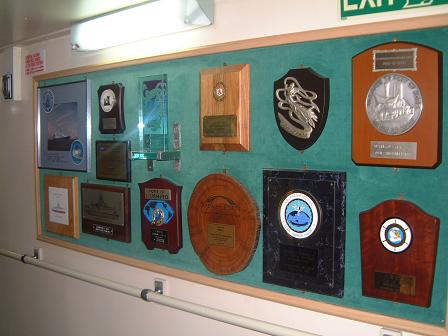♦MISMO Daily Report
|
|
|
Wednesday, Nov. 15, 2006
R/V MIRAI
"slight increase of shallow convections"
Fine
Easterly (5m/sec) was dominant, and wave height was 1.5m.
Observations:
Radiosonde observation, CTD casting, and other continuous observations
have been conducted.
Snow-white sonde was launched at 1110 LST.
From this morning, shallow convections and congestus clouds often
developed in the daytime (photo-1). In the evening, light rain was
observed on the MIRAI. Most cloud systems moved westward in accordance
with general lower tropospheric easterlies.
Intake SST reached only 29.8 degC at maximum.
Satellite-based cloud images still show the existance of large cloud
area around and east of 70E.
Remarks:
Today, we had 9th seminar (photo-2). ISAR (Infrared Sea surface
temperature Autonomous Radiometer) from University of Miami was the
main subject of today's talk. He is also the man who developed the
SOAR (Shipboard Oceanic and Atmospheric Radiation measurement) system,
that has been adopted as standard radiation package on the MIRAI.
Photos 3 and 4 shows another side of observation.
Some of researchers enjoy the brilliant star at night (photo-3).
When the MIRAI call at new port, or, collaborate with other ships, we
often do a "plate exchange" in memory. Those plates are put on the
wall (photo-4), and now we have three spaces for that.




